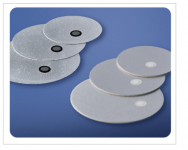Hey all - I just wanted to come here for a little more information from the community that I haven't been successful finding on my own.
I've read that chlorine starts to break down relatively quickly on the shelf, and will be less effective over even a few months on the shelf.
My main question is this. If I used, lets say, year old chlorine in sealed bottles, will A or B happen:
A - the chlorine will report normally when doing a free chlorine test, but will just not be as actually effective
B - the chlorine will report lower numbers than fresh chlorine in regards to the test
I wanted to do a SLAM, and had two cases of 12.5% sittng on the shelf from last year - so wondering how effective that might be.
Thank you!
I've read that chlorine starts to break down relatively quickly on the shelf, and will be less effective over even a few months on the shelf.
My main question is this. If I used, lets say, year old chlorine in sealed bottles, will A or B happen:
A - the chlorine will report normally when doing a free chlorine test, but will just not be as actually effective
B - the chlorine will report lower numbers than fresh chlorine in regards to the test
I wanted to do a SLAM, and had two cases of 12.5% sittng on the shelf from last year - so wondering how effective that might be.
Thank you!



